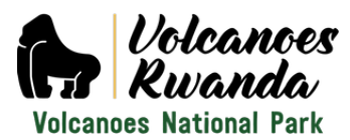Usually, before visiting Rwanda, the first thing most trekkers want to find out how difficult is gorilla trekking in Volcanoes National Park, is it hard or easy? Which gorilla group is simple to track? How tough is the terrain? All these are some of the important questions that need to be addressed prior traveling to the destination like Rwanda for mountain gorilla trekking. Gorilla trekking is remarkably one of the most thrilling experiences that come once in lifetime. The adventure entirely involves hiking through the thick vegetation of the Volcanoes National Park and the steep terrains to look out for a group of these impressive creatures while they are in their natural habitat. This means that you have to be ready to hike in challenging terrains and in any kind of weather conditions to view these endangered apes. The whole process shouldn’t look scary as there are several older visitors who may not regard themselves as better hikers of adventurers but they have managed to track the gorillas in Rwanda.
The treks are strenuous and they come with several challenges but the whole process depends on which gorilla group you will be assigned or nature of terrains and your level of physical wellness to be able to hike. If you are interested in this adventure, feel free and be honest to yourself and specify the conditions you need to make everything comfortable and convenient to you as well based on your age, health status and or physical fitness level. It hurts to see some other people proceed to see a group of mountain gorillas and for you the porters carry. For those who have a lot of vigor and able to hike for longer distances, they can choose the most challenging families to track while those who are physically challenged, closely located gorilla families are the best option for you. Equally, the level of hardness for gorilla trek depends on other factors such as the vegetation cover of the place where some places can be thicker compared to the rest, nature of the terrain where if it rains, the ground turns to be very slippery, the age of visitors where those beyond 55 years can find it more challenging to trek some gorilla families. Don’t forget to grab a walking stick and have plenty of drinking water at least a bottle or two as well as energy snacks to keep you strong.
Entirely, there is need to hire a porter to help carry the heavy load especially for those who do not trust their level of physical fitness. You will be accompanied by park guide who will try his level best to make the experience enjoyable. The interesting bit of it is that even those above 70 years have succeeded in trekking the gorillas in the area and have had no challenge although most of them come back feeling tired especially those who are not familiar with the most challenging hikes. The steep terrain sickness usually doesn’t feature as a big deal and not even the stinging insects because you will need a pair of gardening gloves, long sleeved shirts, waterproof hiking boots that are light weight and comfortable for you to hike, insect repellents, first aid box and many others.
The first part for gorilla trekking entirely comes with hiking from where the vehicle will stop you or the lodge to the park boundary. The journey can take about half an hour to six hours or even longer than that depending on the location of gorilla family that will be assigned or you planned to track. The first part is really predictable as most places can be gently sloping except for the Susa ‘A’ group which is regarded as the most challenging to hike through due to steep slopes. The second episode comes with the real treks where you really engage in looking out for the gorillas in the jungles and comprises of guides, park trackers and visitors. This part is not easily predictable because the time you will take to get the gorilla family isn’t known. Trekking through the Susa family is strenuous but rewards visitors with spectacular views of its 33 gorillas. Equally, Karisimbi family also known as the Susa B is sometimes challenging to hike because its members tend to wonder on higher mountain slopes of Mount Karisimbi and this means that visitors have to be physically well to hike to the top of the mountain. Preferably, persons around 20 and 30 years these are the best families for them to track. As well, Amahoro group is challenging as it takes visitors to Mount Bisoke slopes to look out for the gorillas. This group isn’t that tough to hike compared to the Susa A.
If you are among the elderly class or you want easy to track gorilla families, then Sabyinyo is the best choice you should make. It is close to the park and easily accessible around the slopes of Mount Sabyinyo and Gahinga. This also applies to Kwitonda, Hirwa and Agashya families; they do not require much energy to hike.
Whereas some of the gorilla families are regarded as easy to find, note that these creatures live in the wild and they keep moving. This means that you have to keep moving looking for them. Mountain gorillas are found between altitude 2500 and 3000 meters above seas level.
In conclusion, mountain gorilla trekking isn’t similar to wildlife viewing in savanna national parks. It adventure is strenuous and requires some physical wellness. The trekking adventures vary from one gorilla family to another. While planning your trek, select wisely the family you want to track in Volcanoes National Park.

